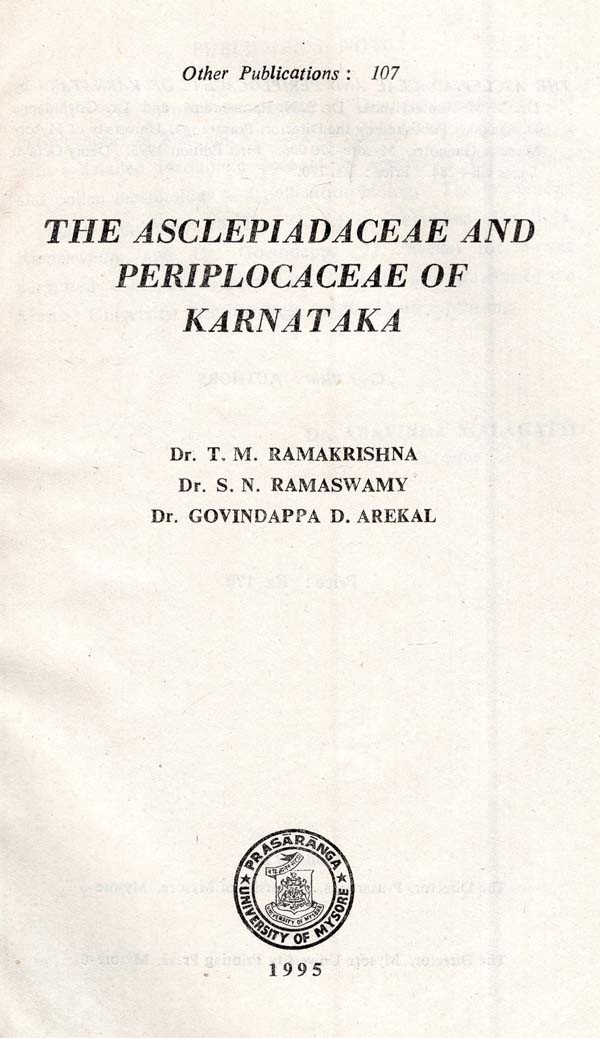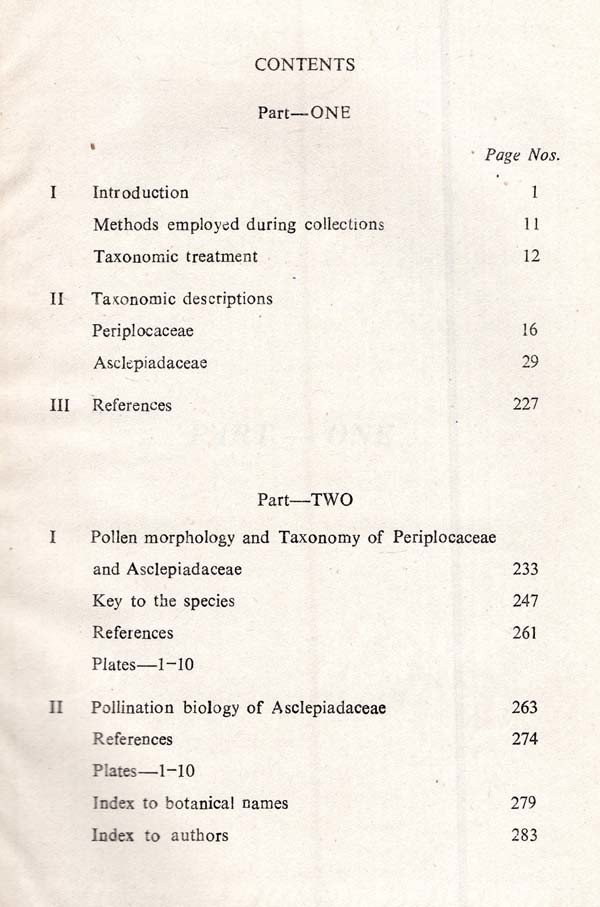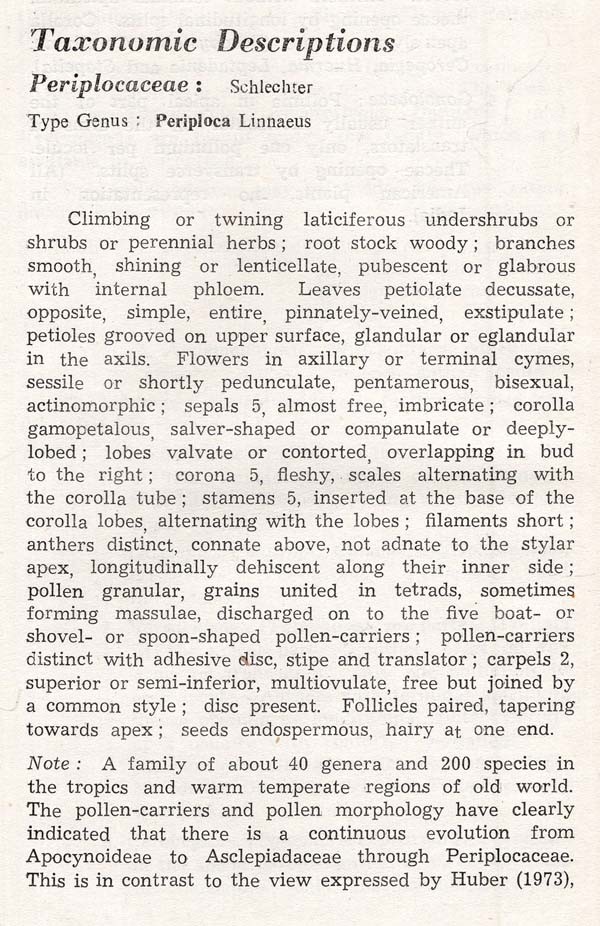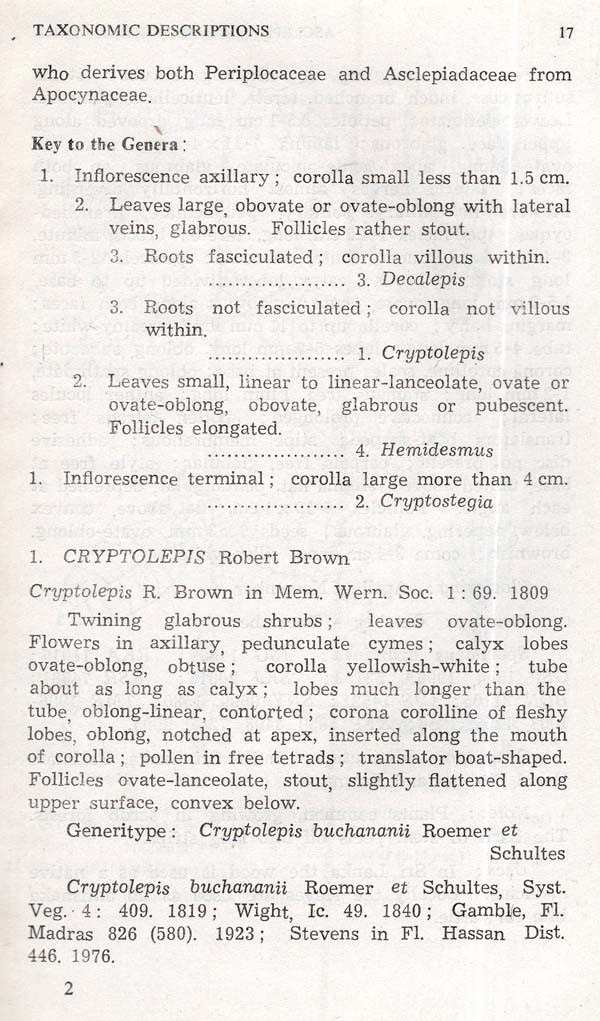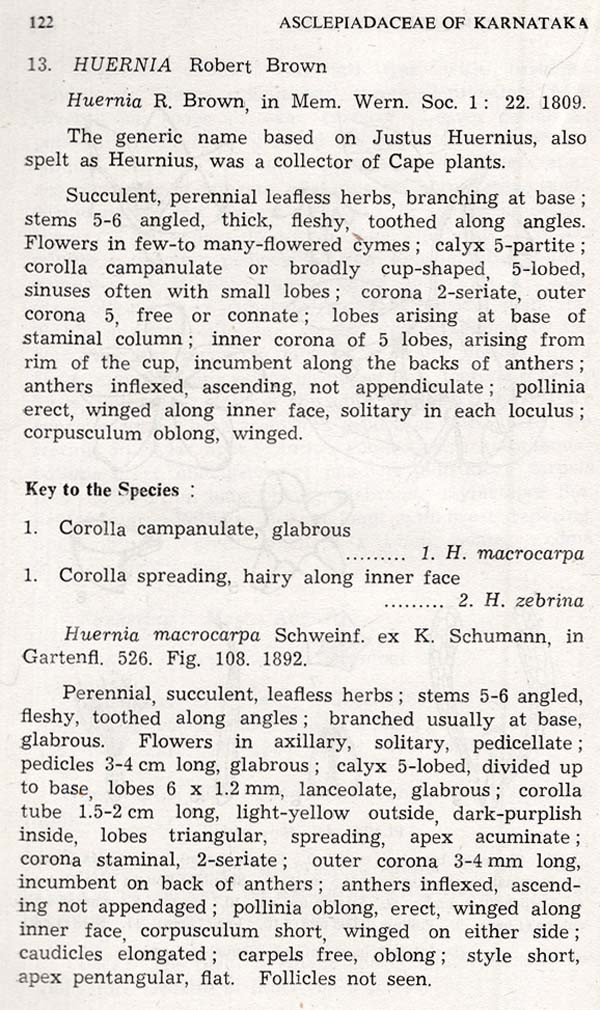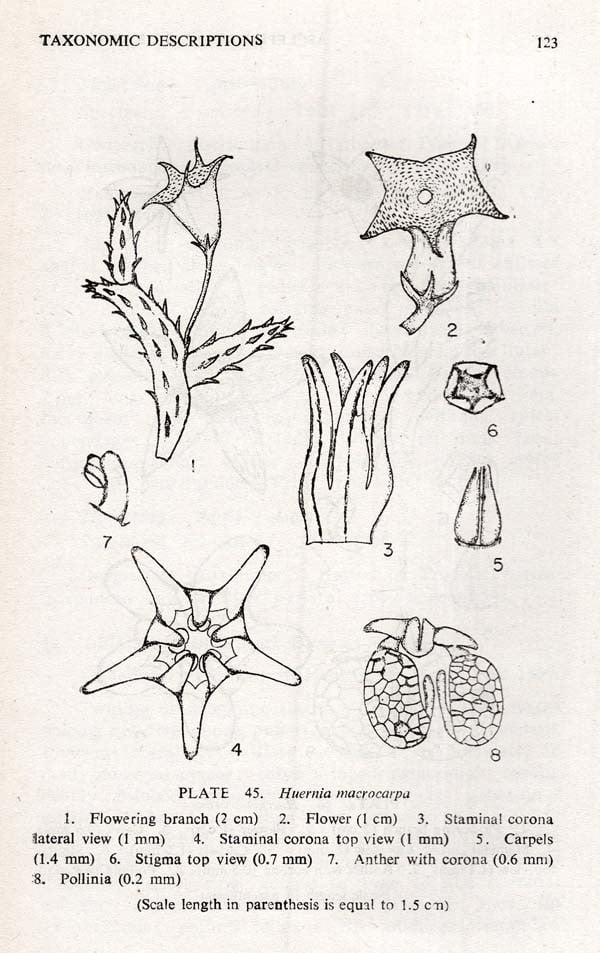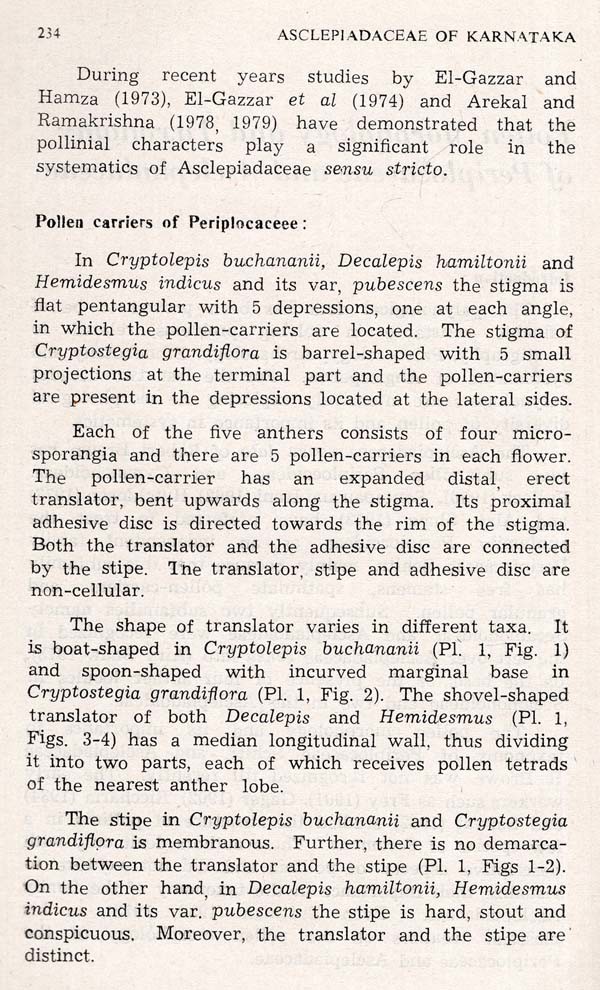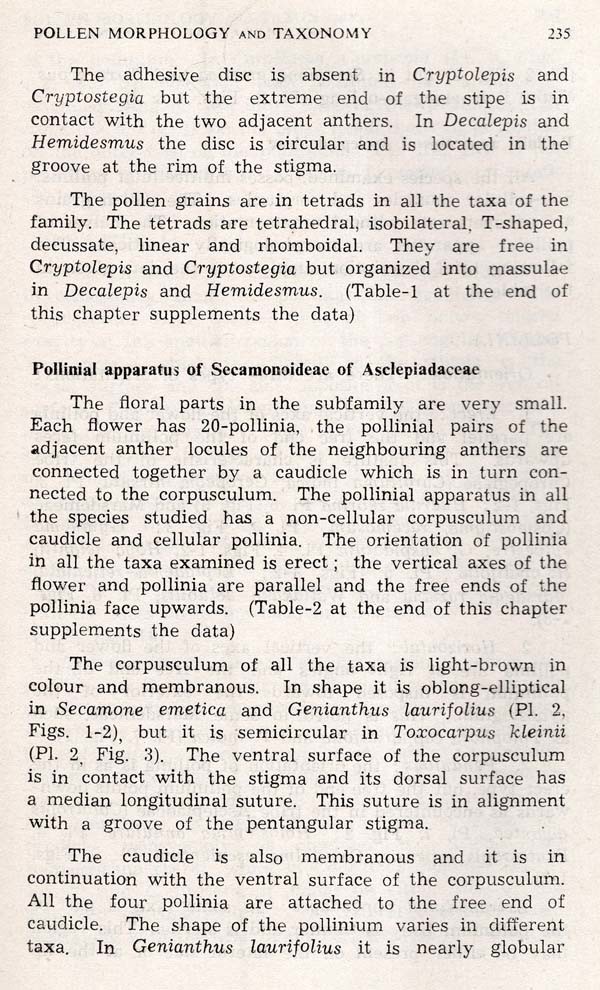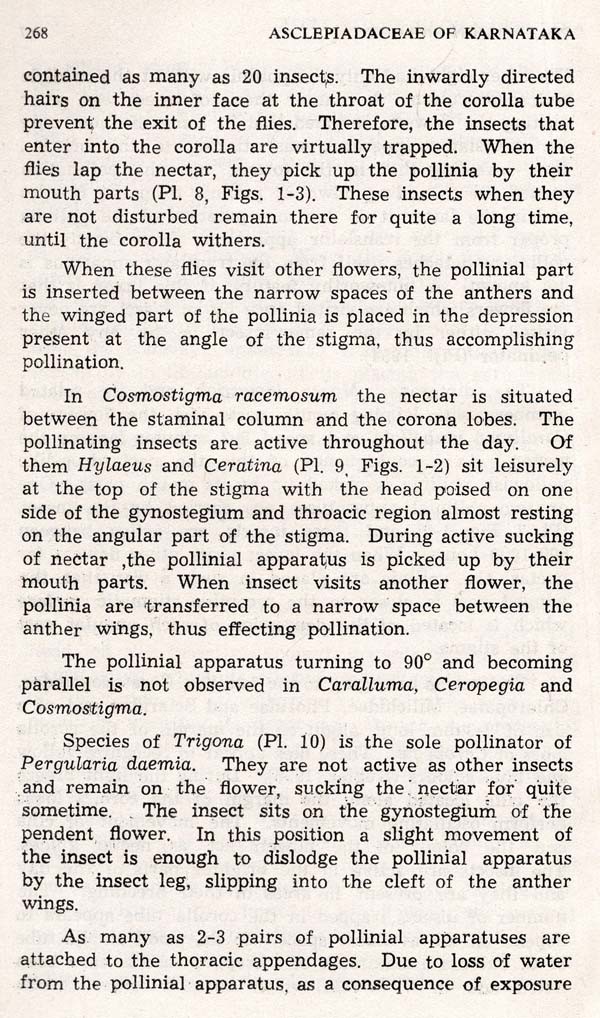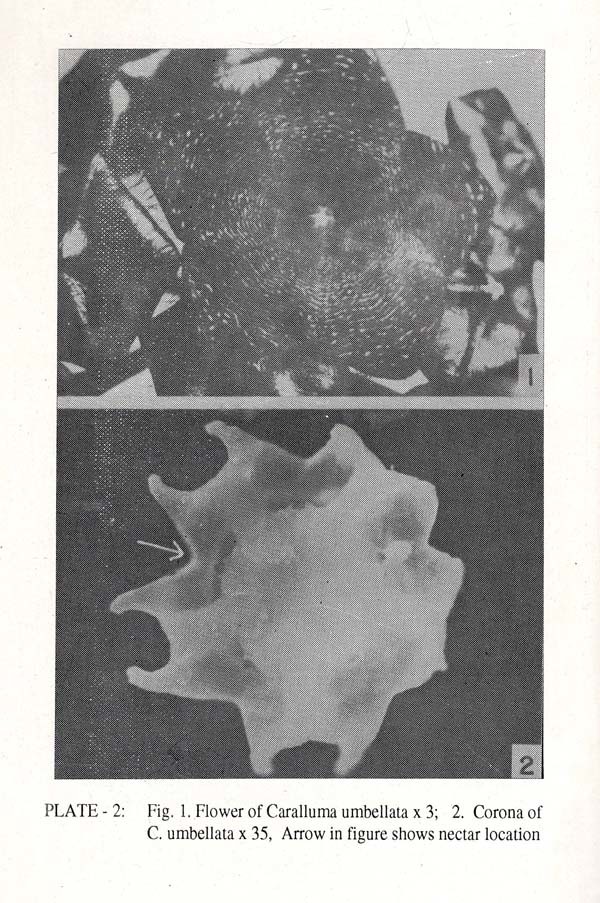
The Asclepiadaceae and Periplocaceae of Karnataka (An Old and Rare Book)
Book Specification
| Item Code: | AZE190 |
| Author: | Various Authors |
| Publisher: | UNIVERSITY OF MYSORE, MYSORE |
| Language: | ENGLISH |
| Edition: | 1995 |
| Pages: | 290 (Throughout B/w Illustrations) |
| Cover: | PAPERBACK |
| Weight | 320 gm |
Book Description
The work is an extensive study by the authors for a period of 4 years based on periodical collections of plants of these unique families from different parts of Karnataka and a critical study.
This book includes two parts: Part one deals with a detailed taxonomical account of species of the families. Part two includes pollen morphology with its bearing on taxonomic and phylogenetic implications and pollination biology.
Prof. S. N. Ramaswamy has been working in the University of Mysore for over two decades. He has worked in the University of Regina and University of Winnipeg, Canada. He is the author of several books in Botany and has been the Golden Jubilee Research awardee of the University of Mysore He has published several research papers in national and international journals on Morphology of Angiosperms, Taxonomy and Ecology, and has guided Ph.D. students.
Prof. Govindappa D. Arekal who has been a student of Angiosperm Morphology. Taxonomy and Morphogenesis is now a retired Professor and Head of the Department of Mysore and Bangalore Universities. He has 35 years of teaching under-graduate and post-graduate students. He has guided several Ph.D. students in the fields of his interest and has to his credit a large number of research publications.
The work is an extensive study by the authors for a period of 4 years based on periodical collections of plants of these unique families from different parts of Karnataka, and critical study.
This book includes two parts: Part one deals with an introduction and detailed taxonomical account of species of the families. Part two includes pollen morphology with its bearing taxonomic and phylogenetic implications, and on pollination biology.
Current trends in taxonomic studies have lead to reassess the relationships among the families or merging them with the others.
**Contents and Sample Pages**
